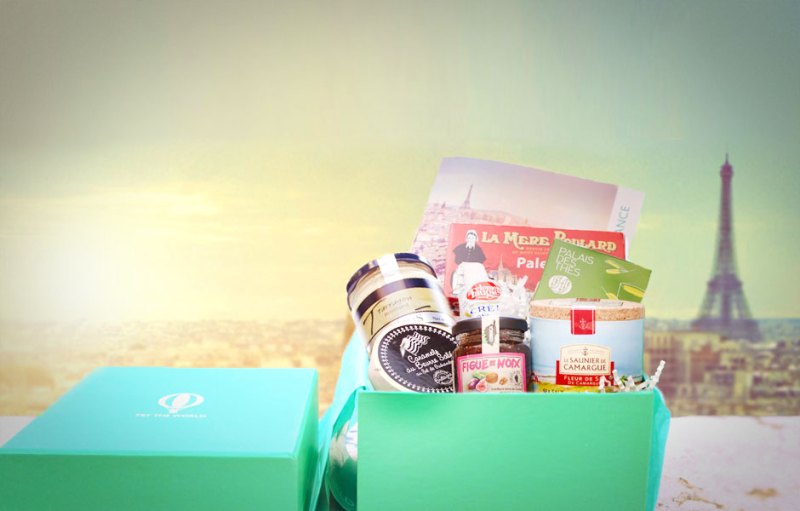
Vorotova’s fascination with food from different countries began while studying abroad in Paris for four month. She immediately caught the travel bug, and would come home with an array of treats for her friends and family. She met Foult, a Frenchman who has traveled extensively and knew the importance of local products, while in graduate school at Columbia. The pair knew they were on to something.
Now, Vorotova and Foult commission celebrity chefs with expertise on certain areas from around the world to curate boxes. Just what do you get in a Try the World box? The Venice Box contains seven to 10 goodies, like a Perugira milk chocolate with hazelnuts bar and a can of Urbani Truffle Thrills in red pesto and truffles, curated by David Rosengarten, plus cards describing each product, and a culture guide that describes the music and film of the region, plus recipes. The Paris box had chestnut spread, Alain Milliat flowers honey, and powdered chocolate. The Tokyo box came with chopsticks, nori, sugar candy and ginger paste. The Rio de Janeiro box had guava paste, tea, cookies and more.
So if you’re a foodie who loves to travel and experience different cultures, Try the World could be your happy place. Or you could give it as a gift for somebody who has a severe case of wanderlust.
For more information on Try the World, visit trytheworld.com.
Editors' Recommendations
- The 8 best hot dog topping alternatives you need to try
- Try coffee from around the world, delivered to your door every month
- Why you need to try Michter’s new 10 year bourbon
- You may not dislike IPAs as much as you think — you’ve just tried the wrong type
- Try these delicious foods high in vitamin E for skin, hair, and heart health


